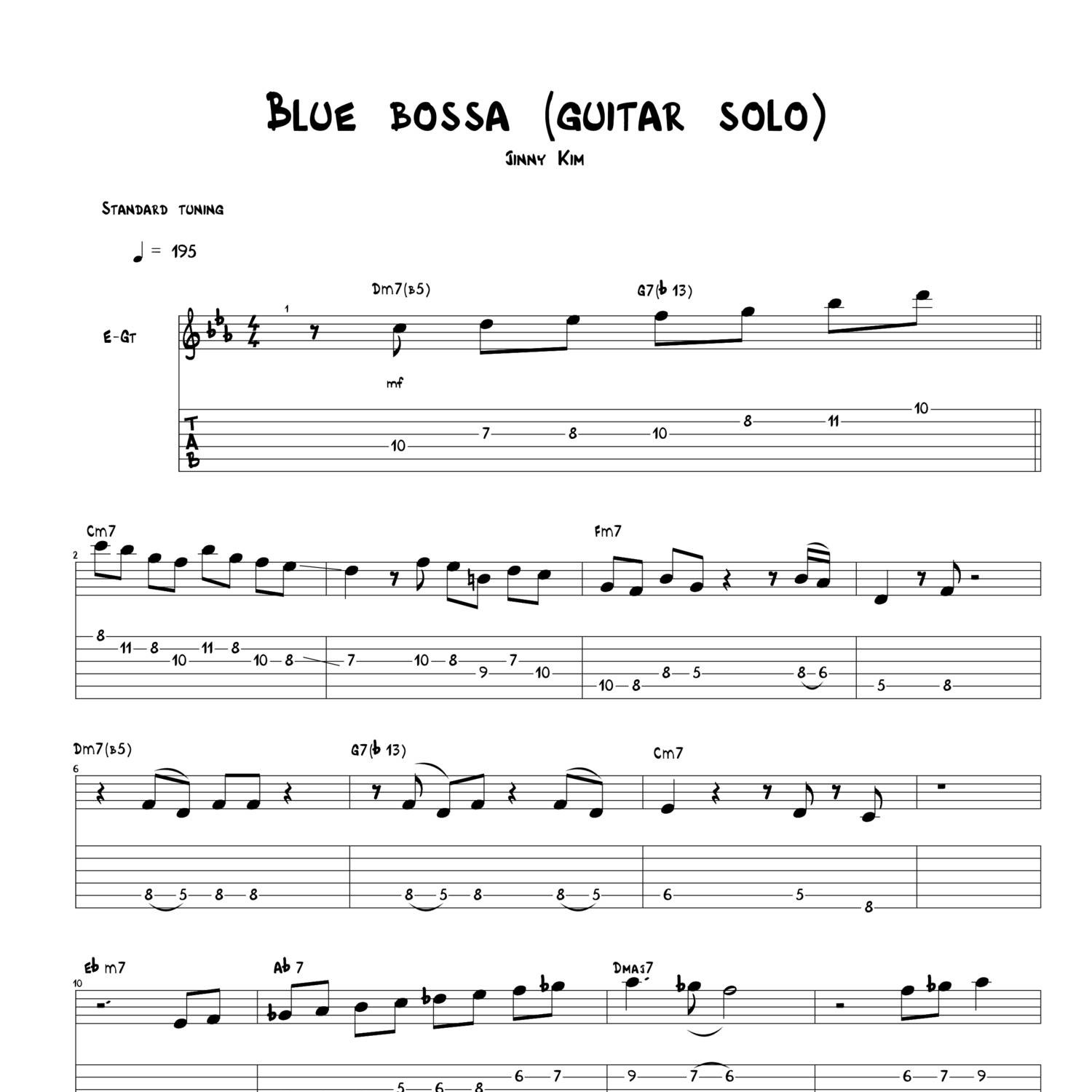
Now try the exercise without the sheet music. First, memorize the arpeggio shapes of Blue Bossa (see below). I play the arpeggios continuously up and down the strings and stay in one position. The following arpeggio study over Blue Bossa will help you on your way. This forces you to come out of your comfort zone because you’ll end up in places on the guitar neck that you’re not very familiar with. Play them over chord changes in one position without stopping (in continuous 8th notes). Memorize the shapes for all chord types in all positions. This is a regular II V I progression, and you can play the Db major scale (=Db Ionian mode) over it.Īrpeggios are an important tool for jazz musicians because they enable you to mirror the harmony of a tune in your solo, something that’s harder to achieve with scales. Here the chord progression modulates to Db major. The scale of choice over the dominant chord (G7) is the C harmonic minor scale (= G Phrygian dominant).Īs an alternative, you can play the G altered scale over the G7. 
The scale of choice to play over C7 is the F harmonic minor scale, also known as the C Phrygian dominant scale or the C Mixolydian b9 b13 scale.Ĭ Harmonic Minor Scale (Measures 6, 14, and 16) On the Cm7 chord, you can also play the C Dorian mode.Īs an optional variation, you can make bar 2 into a C dominant 7th chord, by playing the F harmonic minor scale.Ĭ7 (in Blue Bossa) is a secondary dominant chord (V/iv) that resolves to Fm7.Ī secondary dominant is a dominant chord that resolves to any chord that is not the tonic (I).

On the blue parts, you use the C natural minor scale, aka the C Aeolian mode.Īs an alternative, you can use the C minor pentatonic scale or the C minor blues scale. Before we go on to the solo, let’s first have a look at the harmonic structure and the guitar scales you can use over Blue Bossa.Ĭ Natural Minor Scale (Measures 1-8 and 13-16)






 0 kommentar(er)
0 kommentar(er)
